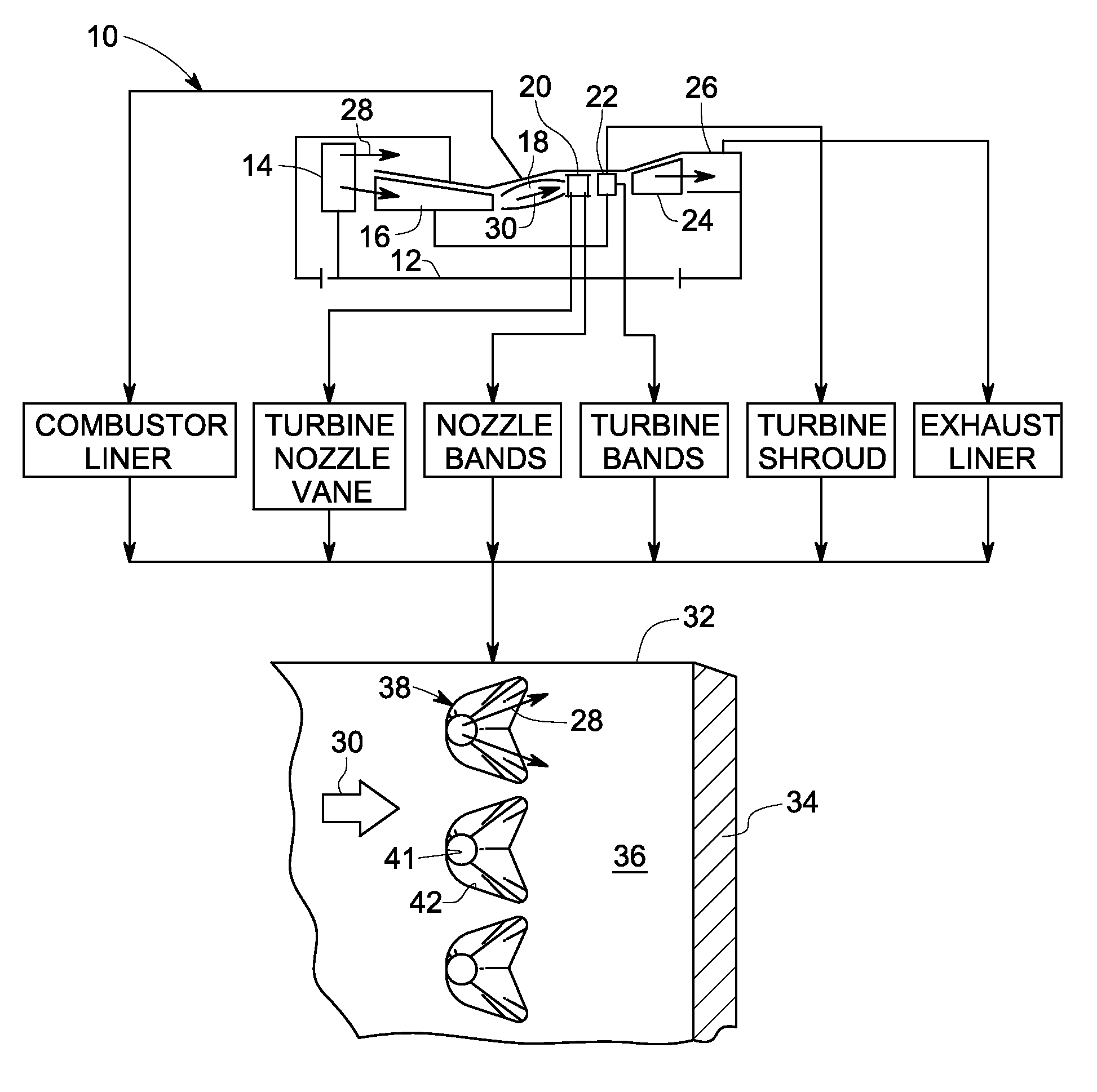System and method for improved film cooling
a film cooling and film technology, applied in the field of film cooling, can solve the problems of high drilling speed, large heat affected zone, and deposition of coatings like tbcs, and achieve the effect of improving cooling effectiveness
- Summary
- Abstract
- Description
- Claims
- Application Information
AI Technical Summary
Benefits of technology
Problems solved by technology
Method used
Image
Examples
Embodiment Construction
[0014]As discussed in detail below, embodiments of the invention include a system and method for producing one or more surface geometries and shapes to improve film cooling in a sample. The system and method disclose an improved laser machining technique via employing a pulsed laser with a shorter pulse duration, lower pulse energy, suitable wavelength, and higher cycle time. As used herein, the term ‘pulse duration’ refers to duration of each energy pulse output from the laser, and ‘cycle time’ refers to repetition rate or frequency of the pulses output from the laser. An exemplary application of the lasers, as discussed in detail below, is in film cooling holes formed on a substrate such as, but not limited to, an airfoil in a turbine engine. It should be noted that the technique may be employed in various other applications such as, but not limited to, film cooling of combustor components, turbine endwalls and platforms, turbine shrouds, repaired components and also the selective...
PUM
| Property | Measurement | Unit |
|---|---|---|
| energy | aaaaa | aaaaa |
| wavelength | aaaaa | aaaaa |
| diameter | aaaaa | aaaaa |
Abstract
Description
Claims
Application Information
 Login to View More
Login to View More - R&D
- Intellectual Property
- Life Sciences
- Materials
- Tech Scout
- Unparalleled Data Quality
- Higher Quality Content
- 60% Fewer Hallucinations
Browse by: Latest US Patents, China's latest patents, Technical Efficacy Thesaurus, Application Domain, Technology Topic, Popular Technical Reports.
© 2025 PatSnap. All rights reserved.Legal|Privacy policy|Modern Slavery Act Transparency Statement|Sitemap|About US| Contact US: help@patsnap.com



